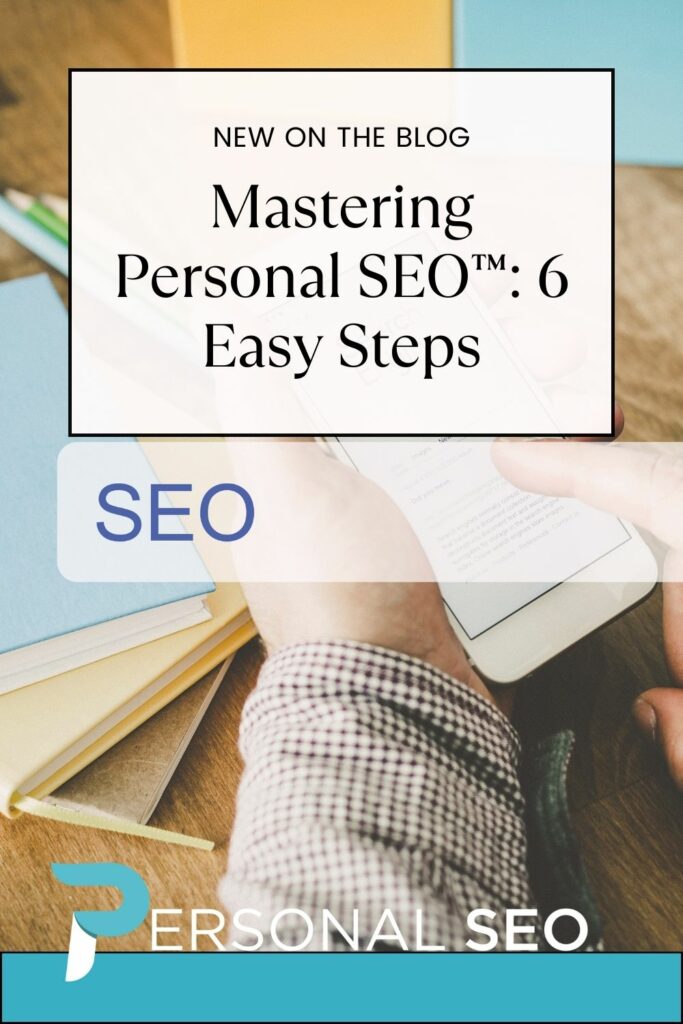Mastering Personal SEO™: 6 Easy Steps
Step 1: Identify Your Keywords
Before diving into the world of search engine rankings, it’s essential to know which words or phrases you want to be associated with. Think about not only your name but also keywords related to your work, especially if you have a common name. Use tools like Moz Keyword Explorer or Google Keyword Planner to find keywords with high search volume and low competition.
Step 2: Optimize Your Website
To tell search engines that your website is relevant for your chosen keywords, follow these simple steps:
- Update your site’s SEO title and meta description with your name and a brief personal branding statement.
- Include your name and keywords in prominent on-page headers.
- Add descriptive alt text to images on your site.
- If you have multiple areas of expertise, create separate pages for each one with their own keywords.
Step 3: Google Yourself and Unify Results
When you search for yourself online, you may find various results, including social media profiles and author pages. Update these profiles with accurate information and consistent messaging, linking back to your personal website. This ensures that people always find the right information when they search for you.
Step 4: Get Backlinks
Google values websites more if other sites link to them. To build credibility, actively seek backlinks to your website. Guest posting, being a source for journalists, or appearing on podcasts are effective ways to achieve this. These backlinks not only improve your site’s reputation but also enhance your search results. Backlinks are vital because they act as endorsements from other websites, signaling credibility and authority to search engines like Google. Quality backlinks improve a site’s search engine rankings, driving organic traffic. They also expand your online reach, fostering brand recognition and trust among a broader audience, making them a fundamental aspect of SEO and online success.
Step 5: Create Keyword-Optimized Content
Writing blog posts related to your chosen keywords can boost your personal brand SEO. You don’t need numerous blogs; even a few help. Additionally, if you’re building thought leadership through guest posts, you can repurpose that content for your blog, increasing your online visibility.
Step 6: Keep It Updated
As your career evolves or if you undergo a name change, update your personal branding SEO accordingly. Ensure that your messaging remains consistent across search results. This ongoing effort will maintain your strong online presence. Keeping your website updated is crucial for SEO (Search Engine Optimization) for several reasons. Firstly, search engines like Google favor fresh, relevant content. Regular updates signal that your site is active and provides value to users, potentially leading to higher search engine rankings.
Secondly, updated content allows you to incorporate new keywords and long-tail phrases, enhancing your site’s visibility for a wider range of search queries.
Thirdly, user experience plays a pivotal role in SEO, and outdated content can discourage visitors. Fresh, accurate information keeps users engaged, reduces bounce rates, and increases the likelihood of conversions.
Lastly, frequent updates demonstrate your authority and expertise in your field, which can improve your website’s credibility, attract more backlinks, and ultimately boost your SEO efforts. In summary, keeping your site updated is a cornerstone of effective SEO, ensuring that it remains relevant and competitive in the online landscape.
Remember, Mastering Personal SEO™ isn’t as complex as it might seem. By following these straightforward steps, you can significantly improve your personal branding and make it easier for people to find you online.
